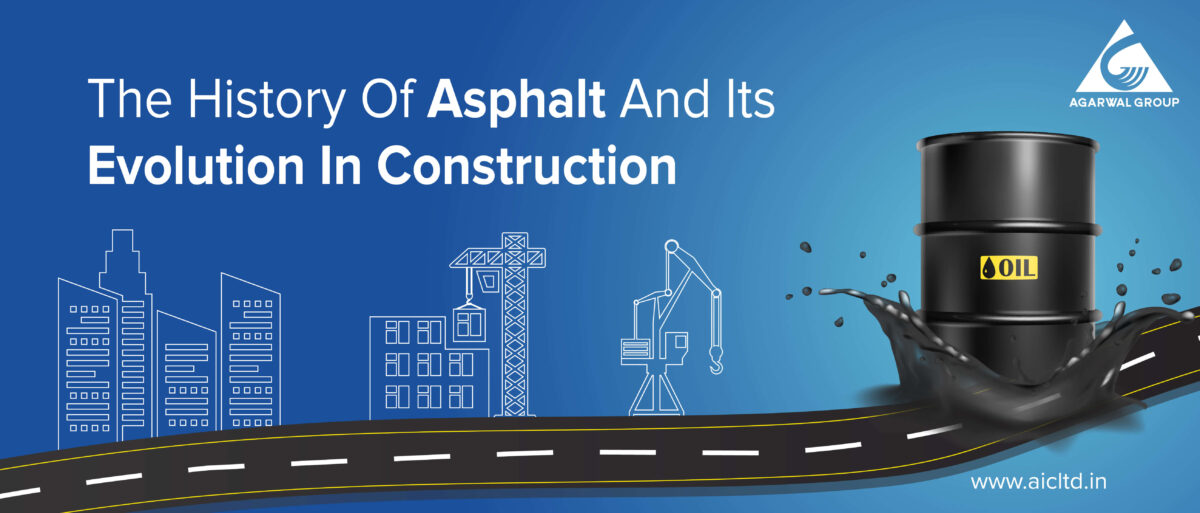History of Asphalt
Asphalt is a natural substance that is formed by the breakdown of aggregate, bitumen and sand. The material is produced by the action of heat and pressure on crude oil, which causes lighter fractions to evaporate and condense into liquid hydrocarbons.
Asphalt in Ancient History
- The first use of asphalt was recorded in ancient Egypt by using natural bitumen deposits found in the Middle East. They used this material to waterproof boats and buildings as well as create waterproof paints for wall paintings.
- The Egyptians were also aware that asphalt could be used as a fuel source, but they didn’t do much with this knowledge until later on in history when Europeans began using asphalt for paving roads and sidewalks.
Asphalt In Modern Times
- Asphalt roads had their beginnings in the early 1800s when the first asphalt roads were constructed.
- The world’s first modern asphalt road was paved in Paris in 1824 using natural asphalt to cover the Champs-Elysee.
- At the same time, roads were also being built in Scotland using broken stones that were later joined with hot tar to create a tarmacadam-like surface. The use of hot tar helped to reduce dust and make maintenance easier while extending the life of the road. These early roads served as a precursor to the massive motorway construction projects of the twentieth century.
- With the rise of automation and mechanisation, the goal of asphalt production in the latter half of the twentieth century was to improve quality, which led to the establishment of the National Center for Asphalt Technology in 1986.
Use cases of Asphalt In Modern Construction
Asphalt has a wide range of use cases in modern construction, making it one of the most versatile materials in the industry.
Here are some use cases of asphalt in modern construction:
- Roadways: The most common and well-known use of asphalt is in the construction of roadways. Asphalt is used to create durable, long-lasting road surfaces that can withstand heavy traffic and extreme weather conditions.
- Parking lots: Similar to roadways, asphalt is used to pave parking lots. It provides a smooth and durable surface that can withstand heavy loads and constant use.
- Airport runways: Airports use high-durability asphalt mixtures for their runways. Asphalt provides a smooth surface that allows aircraft to take off and land safely.
- Athletic tracks: Asphalt is also used for the construction of athletic tracks. It provides a smooth and shock-absorbing surface that is ideal for running and other athletic activities.
- Bike paths: Asphalt is a popular choice for bike paths and trails. It provides a smooth surface that is easy to ride on and can withstand heavy use.
- Roofing: Asphalt shingles are a popular roofing material. They are durable, fire-resistant, and can last up to 30 years.
- Waterproofing: Asphalt is also used as a waterproofing material. It is applied to foundations, walls, and roofs to prevent water from seeping into buildings.
- Bridge decks: Asphalt overlays are used to repair and protect bridge decks. The asphalt provides a smooth and durable surface that can withstand heavy traffic and harsh weather conditions.
Evolution of Asphalt In Construction
Today, asphalt has been greatly improved to be more efficient, environmentally friendly, long-lasting, and smoother, bearing little resemblance to its early uses as a seaming material for baskets or road surfaces.
Despite its evolution, the progress made in the development of this ubiquitous substance over the last 100 years is nothing short of remarkable.
In modern construction, asphalt is used as an adhesive for asphalt shingles and roof membranes. It’s also used as a waterproofing membrane on driveways and patios, as well as for sealing joints between concrete slabs and driveways.
Asphalt is a product of the ancient world and has always been popular due to its unique properties. Today, asphalt is used in almost every industrialised country and is utilised in a variety of ways, whether it’s as a building material or as an adhesive.

